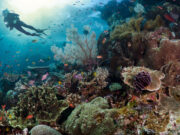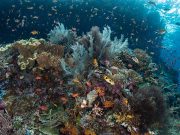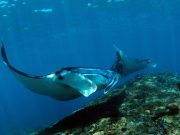In a rare piece of good news in the marine world, scientists have found two diving areas where manta rays are thriving.
Off the coast of Ecuador, American scientists have identified a distinct population of oceanic manta rays that is more than 10 times larger than any other known subpopulation of the species.
 Image: Deposit Photos
Image: Deposit PhotosMeanwhile, over in the Raja Ampat archipelago in Indonesia, reef manta ray populations have increased significantly, highlighting the importance of long-term conservation and management measures such as well-enforced Marine Protected Areas (MPAs) and fisheries regulations, says researcher Edy Setyawan, of the University of Auckland’s Institute of Marine Science.
Ecuador Oceanic Mantas
Populations of oceanic manta rays are typically small and vulnerable to human impacts, but the Ecaudor population around Isla de la Plata is large and potentially quite healthy according to Joshua Stewart, an assistant professor with the Marine Mammal Institute in Oregon State University.
“It’s clear that something different is happening here,” Stewart said. “This is a rare story of ocean optimism. In other regions, we typically have population estimates of 1,000 to 2,000 animals, which makes this species very vulnerable. In this area, we’ve estimated that the population is more than 22,000 mantas, which is unprecedented.”
 Image: Deposit Photos
Image: Deposit Photos“Many of the photos used in our study were contributed by recreational divers who became citizen scientists when they snapped photos of manta rays,” said the study’s lead author, Kanina Harty of The Manta Trust. “We get a huge amount of information about each animal just from these photographs.”
Each manta ray has a unique spot pattern on its belly, similar to a human fingerprint, which allows researchers to identify individual animals and track their movements and locations over time. Photos of individual rays can also be used to document injuries, evidence of mating and maturity.
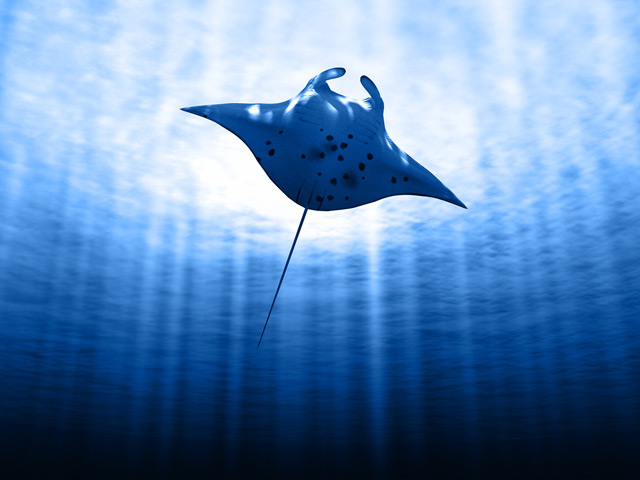 Image: DepositPhotos
Image: DepositPhotosRaja Ampat Reef Mantas
Researchers studied reef manta rays (Mobula alfredi) in two of Raja Ampat’s largest MPAs, Dampier Strait and South East Misool. They used sightings of rays, each individually identified by photograph, to assess population dynamics from 2009 to 2019. In Dampier Strait, the estimated population increased to 317, an annual compound gain of 3.9 percent, while South East Misool’s estimated gain to 511 was 10.7 percent on the same basis.
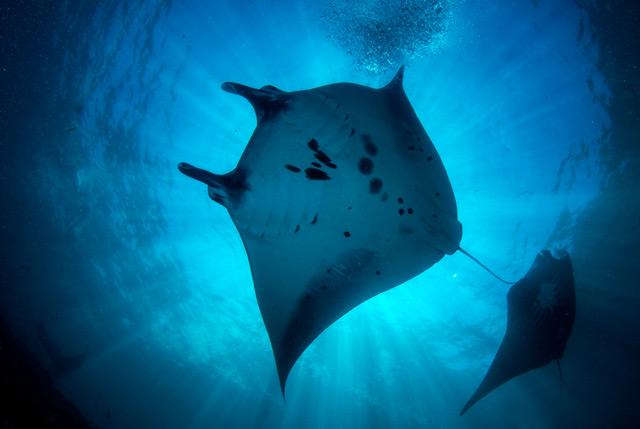
The increased population sizes resulted from high survival rates (up to 93 percent of individuals in each group survived each year) and high rates of recruitment (typically groups got a 20 percent annual boost from new members). While conservation measures substantially reduced fishing pressures, another reason for the populations thriving was the El Niño Southern Oscillation climate cycle, which boosted plankton numbers. That lead to larger and more frequent aggregations of the manta rays for feeding, which in turn provided more opportunities for mating.
Further Reading
Harty K, Guerrero M, Knochel AM, Stevens GMW, Marshall A, Burgess K, Stewart JD (2022) Demographics and dynamics of the world’s largest known population of oceanic manta rays Mobula birostris in coastal Ecuador. Mar Ecol Prog Ser 700:145-159. https://doi.org/10.3354/meps14189
Edy Setyawan et al (2022) Population estimates of photo-identified individuals using a modified POPAN model reveal that Raja Ampat’s reef manta rays are thriving. Front. Mar. Sci., 15 November 2022 http://dx.doi.org/10.3389/fmars.2022.1014791
Image credits:
- Giant manta rays: Deposit Photos
- manta-ray-divers: Deposit Photos
- manta-ray-below: DepositPhotos






